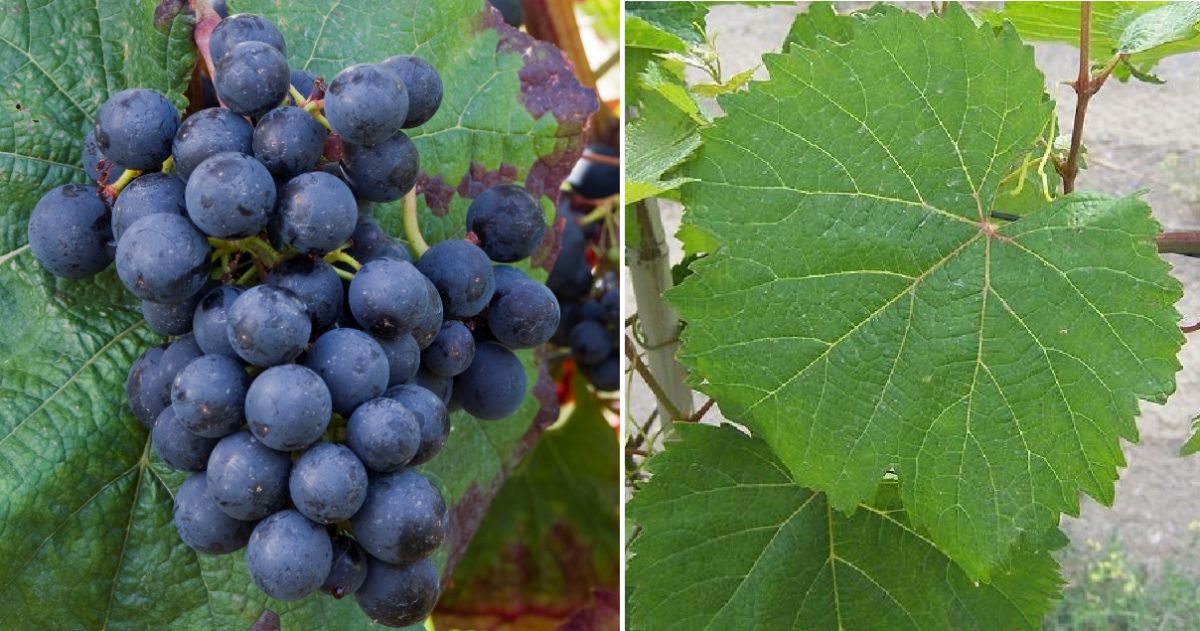The red grape variety originates from France. There are around 130 synonyms, indicating the vine's presumably great age and worldwide distribution. Some grouped alphabetically by country are Agreste, Aneroir, Auxerrois, Auxerrois de Laquenexy, Auxerrois des Moines de Picpus, Auxerrois du Mans, Beran, Beraou, Blanc de Kienzheim, Bordelais Noir, Boucares, Bouchalès, Bourguignon Noir, Bouyssales, Cahors, Cau, Cauly, Coly, Coq Rouge, Cor, Cors, Cos, Côt, Cot a Queue Verte, Cot de Bordeaux, Cot de Pays, Cot de Touraine, Cot Malbec, Cots, Cruchinet, Doux Noir, Estrangey, Étranger, Étranger Petit, Gôt Noir, Grifforin, Grand Vesparo, Gros Auxerrois, Gros Noir, Grosse Mérille, Hourcat, Jacobain, Jacobin, Jacohin, Lutkens, Malbec (second main name), Malbec à Queue Rouge, Malbeck, Mancin, Mausat, Monrame, Negrera, Noir de Chartres, Noir de Pressac, Périgord, Pied de Perdrix, Pressac, Prolongeau, Prunelat, Prunieral, Quercy, Quille de Coqu, Saint Émilion, Vesparo (France); Malbech (Italy); Cagors, Nuar de Presac (Moldova); Malbec, Malbeck (South America); Médoc Noir (Hungary).

Despite seemingly suggestive synonyms or morphological similarities, it must not be confused with the varieties Abouriou (Malbec Argenté), Bouchalès, Canari Noir, Mancin, Menoir, Négrette or Prunelard. It is also not a colour mutation of the white Auxerrois variety. According to DNA analyses carried out in i2013, Cot comes from a presumably natural cross between Magdeleine Noire des Charentes x Prunelard. Cot was a parent of the variety Jurançon Noir as well as a crossing partner of the new varieties Cabernet Malbec, Caladoc, Odola and Semebat. According to one hypothesis, the vine was imported from Cahors (south-west France) in the 16th century under King François I (1494-1547) and was also cultivated in Champagne. A certain Malbeck spread the vine widely in Bordeaux in the 18th century, coining the name Malbec, which is common here and overseas. In Saint-Émilion, it is called Pressac after an unknown person who introduced the vine here. And in the west of France it is usually called Cot or Côt.
The medium ripening vine is sensitive to frost and susceptible to downy mildew, black spot disease and coulure. It produces dark-coloured, fruity-spicy, high-alcohol red wines with aromas of plums, blueberries, spices, bitter chocolate and tobacco. Cot belongs to the extended circle of the best grape varieties in the world, the Cépages nobles. In France, the vine is permitted in many appellations of south-west France, as well as Languedoc, in addition to the main growing region of Cahors with 70%. It is also a component of the Bordeaux blend, but has lost importance here in terms of stock. The French cultivation area totals 6,100 hectares. There are further stocks in Europe in Italy (178 ha), Moldavia (162 ha), Romania (7 ha), Spain (113 ha), Switzerland (15 h), Turkey (21 ha) and Hungary (3 ha).
In the middle of the 19th century, the French agronomist Michel Aimé Pouget (1821-1875) introduced it to Argentina, where it found ideal conditions in terms of soil and climate, especially in the Mendoza region, and was therefore widely cultivated. Here, under the name Malbec, the variety occupies a total of 40,401 hectares of vineyards, making it by far the most common Argentine variety. In California, it was very important before Prohibition (1920 to 1933). Today it is included in the famous Opus One. In the USA, it occupies a total of 1,610 hectares. Other overseas stocks are in Australia (515 ha), Bolivia, Brazil (30 ha), Chile (2,290 ha), Israel (110 ha), Canada (41 ha), Mexico, New Zealand (129 ha), Peru (10 ha), South Africa (452 ha) and Uruguay (43 ha). In 2016, a total of 52,233 hectares were designated, with an upward trend. This puts the variety in 17th place in the global grape variety ranking (Kym Anderson statistics).
Source: Wine Grapes / J. Robinson, J. Harding, J. Vouillamoz / Penguin Books Ltd. 2012.
Images: Ursula Brühl, Doris Schneider, Julius Kühn-Institut (JKI)
Voices of our members

The wein.plus encyclopaedia is a comprehensive, well-researched reference work. Available anytime and anywhere, it has become an indispensable part of teaching, used by students and myself alike. Highly recommended!
Dominik Trick
Technischer Lehrer, staatl. geprüfter Sommelier, Hotelfachschule Heidelberg